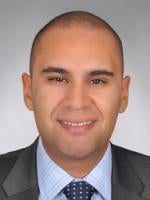On December 20, 2016, the Centers for Medicare & Medicaid Services (CMS) issued a final rule (the Final Rule) which includes three new mandatory episode-based payment programs for cardiac care, as well as the expansion of the Comprehensive Care for Joint Replacement Model (CJR). The models are implemented by the CMS Innovation Center, under authority issued in the Affordable Care Act. In the Final Rule, CMS also created a Medicare ACO Track 1+ Model to incentivize more small practices to proceed to performance-based risk.
The episode-based payment model for cardiac care (the Cardiac Care Model) will require mandatory participation by all hospitals within 98 randomly-selected metropolitan statistical areas (MSAs) with a population of at least 50,000 and at least 75 Acute Myocardial Infarction (AMI) eligible cases. The Cardiac Care Model begins July 1, 2017 and continues through December 31, 2021. The hospitals will receive retrospective episode-based payments for treating heart attacks and bypass surgeries, and they will be financially accountable for all care from the date of the hospitalization for the procedure through the date 90 days following the hospital discharge. The Cardiac Care Model includes AMI episodes (MS-DRGs 280-282 or 246-251) and coronary artery bypass graft surgery episodes (CABG) (MS-DRGs 231-236).
The Final Rule also includes the Cardiac Rehabilitation Incentive Payment Model, which will be used across 45 geographic areas. Under this model, CMS is testing whether a payment incentive can increase the utilization of cardiac rehabilitative services. Hospitals will receive incentive payments from CMS based on the frequency of cardiac rehabilitation utilization.
Additionally, the CJR model is expanded under the Final Rule to include surgical hip and femur fracture treatments (MS-DRGs 480-482). The CJR model aims to test bundled payments and quality measurement for an episode of care related to hip and knee replacements.
CMS also announced a new “Medicare ACO Track 1+ Model,” which begins in 2018. This will test a payment model which includes a more limited downside risk than in Tracks 2 or 3 of the Medicare Shared Savings Program (MSSP). CMS hopes this will encourage more progression to performance-based risk, especially among small practices. This model will qualify as an Advanced Alternative Payment Model under the Medicare Access and CHIP Reauthorization Act of 2015 (MACRA). The new model includes the following elements from Track 3 of the MSSP: prospective beneficiary assignment, which allows ACOs to know in advance the patient population for which the ACO is accountable; choice of symmetrical thresholds from which to start sharing in savings or losses; and the option to elect the Skilled Nursing Facility 3-Day Rule Waiver, which provides greater flexibility to the ACO.
With these new alternative payment models, CMS continues to shift Medicare payments from traditional fee-for-service to value-based payments. The new payment models, including the Cardiac Care Model, the Cardiac Rehabilitation Incentive Payment Model and the expanded CJR, all qualify as Advanced Alternative Payment Models under MACRA, and thus present opportunities for clinicians who collaborate with participant hospitals to qualify for a five percent incentive payment.






 i
i

